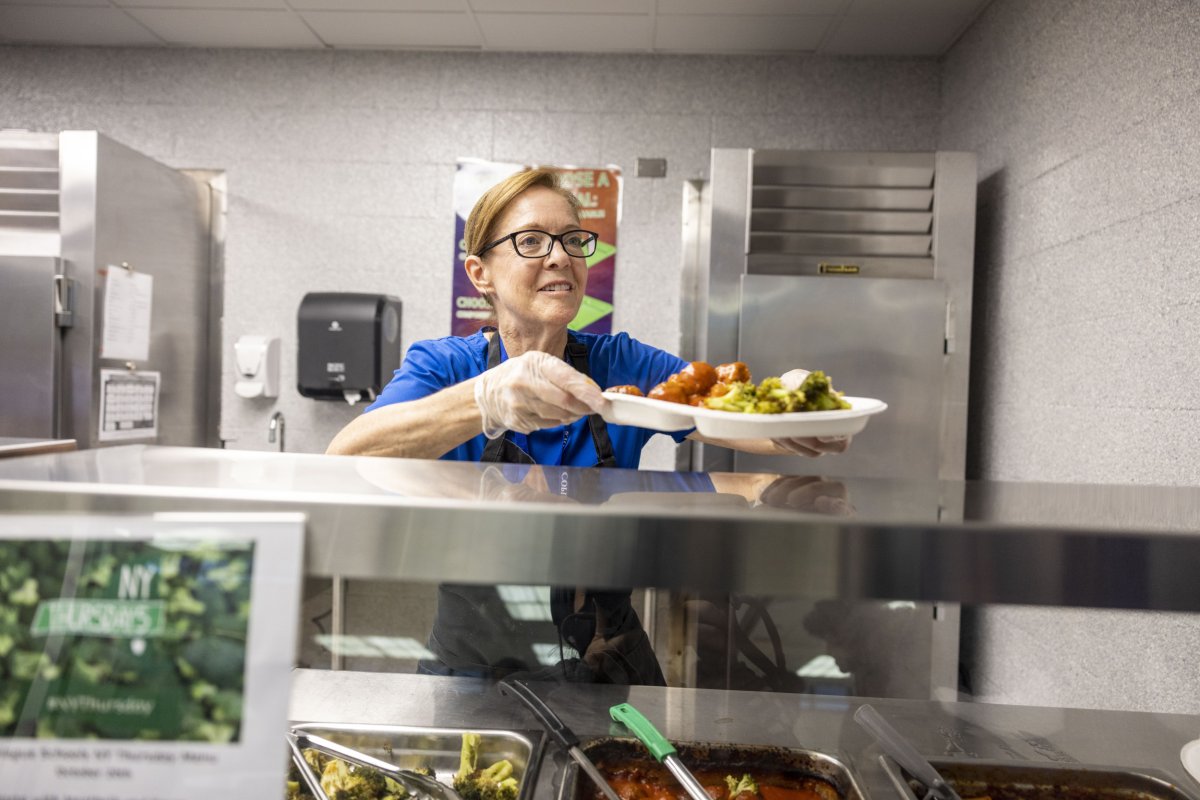School meals could look very different starting in fall of 2025 as the U.S. Department of Agriculture released an updated set of standards to boost nutrition in public school meal offerings.
The changes will go into effect between fall 2025 and fall 2027 and include rules for less sugar and more flexible meal options.
Across the country, nearly 30 million get their breakfast and lunches from public K-12 schools, meaning many students get the bulk of their nutrition from their meals inside schools.
"We all share the goal of helping children reach their full potential," Agriculture Secretary Tom Vilsack said in a statement. "Like teachers, classrooms, books, and computers, nutritious school meals are an essential part of the school environment, and when we raise the bar for school meals, it empowers our kids to achieve greater success inside and outside of the classroom. Expanding on this major milestone, the Biden-Harris Administration will continue to partner with schools, districts, states and industry to build on the extraordinary progress made to strengthen school meals."

Under the new guidelines, public schools must limit added sugars to less than 10 percent of weekly calories in their meals for the first time. The change comes after parents and teachers have complained about added sugars in meals, especially in breakfast items like cereal and yogurt.
Schools will also have to look at the added sugar in the milk they provide and reduce sodium content in meals by fall 2027.
Schools will also have the added flexibility of integrating locally grown unprocessed food products, which were previously limited in school meal programs. There will also be limits on the percentage of non-domestic grown and produced foods schools are able to purchase, which the USDA is hoping will enhance the role of American farmers and fishers in providing nutritious foods to schools.
Some things are staying the same, however. The government's rules and emphasis on whole grains and fruits and vegetables continues to be a foundation of school meals.
"The nutrition standards give us a framework to build on and help us know that the meals we're serving are nutritious for our students," Boston Public Schools Executive Director for Food and Nutrition Anneliese Tanner said in a statement. "The standards help us create equity in our food system by ensuring that all kids receive healthy meals at school. And in fact, we know that school cafeterias are the healthiest places that Americans eat."
Some districts, like Boston Public Schools, have already limited the added sugar and sodium content as the USDA's rules suggest, but others will have more than three years to reach all requirements.
The changes mark the first widespread reform for school meals since former President Barack Obama signed the Healthy, Hunger-Free Kids Act in 2010.
"While much more can and needs to be done, these new rules are a small step in the right direction," sports nutritionist and exercise physiologist Tom Holland told Newsweek.
The nutrition available in schools could be key in combating childhood obesity, which affects roughly 20 percent of children and adolescents as of 2020, according to the U.S. Centers for Disease Control and Prevention.
Holland said the new rules mark progress, but children still need much more to be done in terms of diet and exercise to have significant effects on learning capabilities and long-term health.
"The ideal school lunch menu would have numerous healthy options to choose from to accommodate differing tastes, whole foods rich in complex carbohydrates, lean sources of protein and healthy fats," Holland said.
Uncommon Knowledge
Newsweek is committed to challenging conventional wisdom and finding connections in the search for common ground.
Newsweek is committed to challenging conventional wisdom and finding connections in the search for common ground.
About the writer
Suzanne Blake is a Newsweek reporter based in New York. Her focus is reporting on consumer and social trends, spanning ... Read more
To read how Newsweek uses AI as a newsroom tool, Click here.








